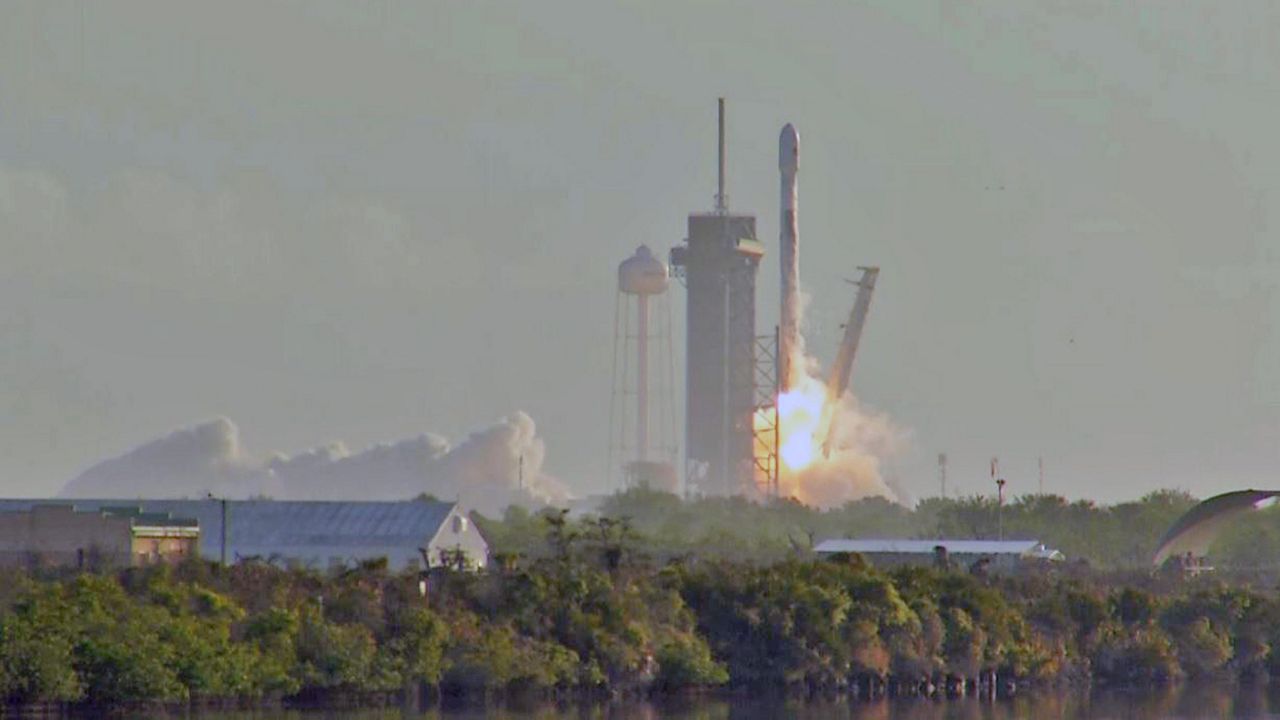KENNEDY SPACE CENTER, Fla. — SpaceX successfully launched a Falcon 9 rocket with the latest batch of its Starlink mini-satellites.
- SpaceX could not recover first-stage boster
- DESTINATION SPACE: Latest Space News | Rocket Launch Schedule
- SEE BELOW: Watch the launch again ▼
On Sunday, the countdown clock got all the way down to zero before the launch attempt from Kennedy Space Center was stopped. SpaceX attributed the stoppage to a technical issue with the engine but didn't elaborate.
However, things went along more smoothly on Wednesday. The sixth batch of Starlink satellites will be added to the constellation currently in orbit, comprising almost 400 gadgets to date and will eventually number in the tens of thousands. The constellation will provide internet service to underserved areas worldwide.
The Falcon 9 first-stage booster has flown four times previously. SpaceX is all about reusing certain rocket parts to make launches more affordable, and this particular first stage has been busy since 2018.
The company is re-using Falcon 9's fairing which was used before for another Starlink mission back in May 2019. Approximately 45 minutes after liftoff, SpaceX’s fairing recovery vessels, "Ms. Tree" and "Ms. Chief," will attempt to recover those two fairing halves.
After liftoff at around 8 minutes the first stage was expected to land on the drone ship then at almost 15 minutes all 60 satellites are expected to begin deployment. However, SpaceX was not able to recover the first-stage booster, which was something it was hoping to do.
Each Starlink satellite weights about 260 kilos with a flat panel design to minimize volume that way the company can stack more satellites in one launch.
The lifespan for the satellites is about five years and once it reaches the end of its life cycle the satellites will de-orbit eventually burning up in the earths atmosphere. These satellites are the first of kind, they are equipped with ion thrusters powered by krypton which allows the satellites to maneuver in space.



